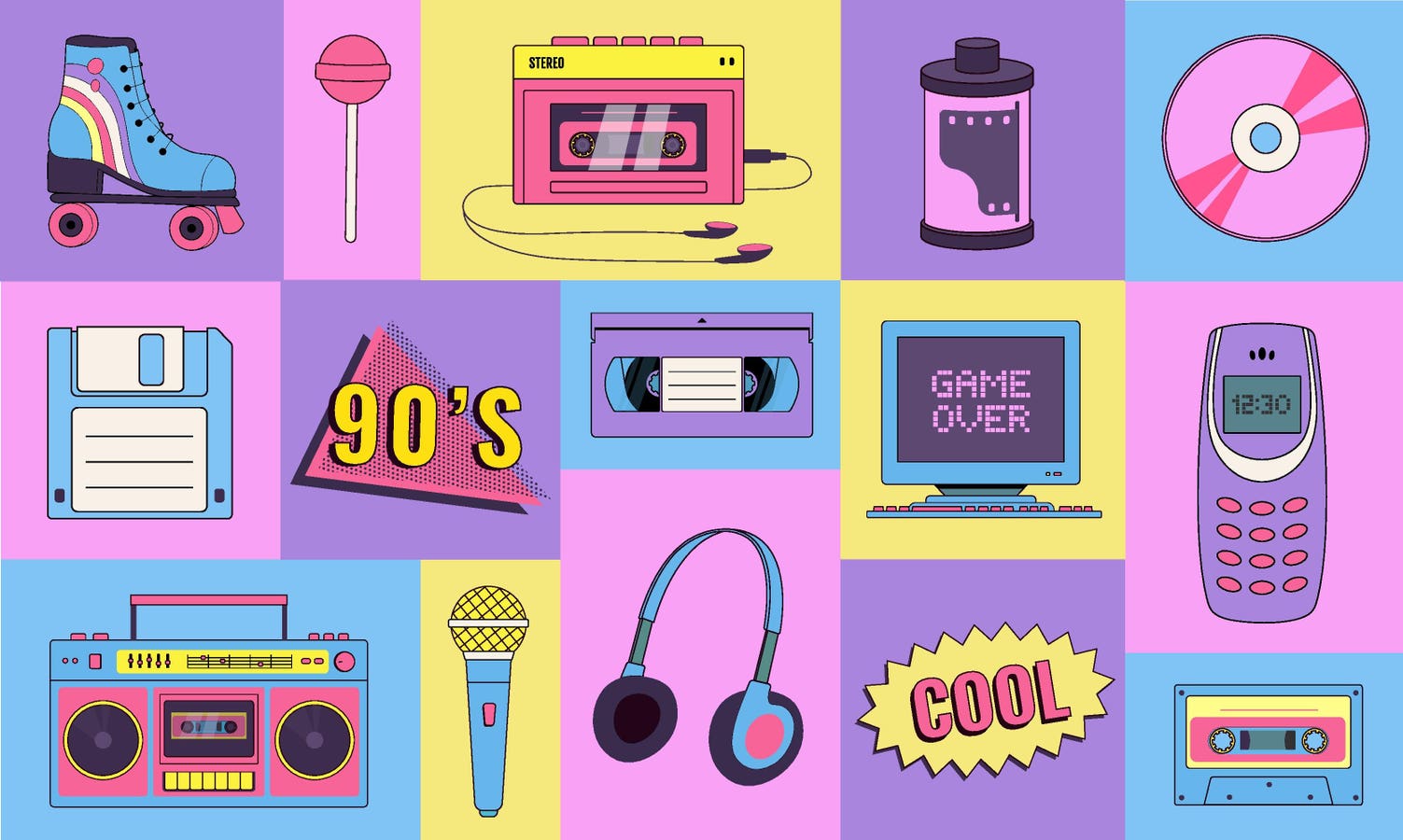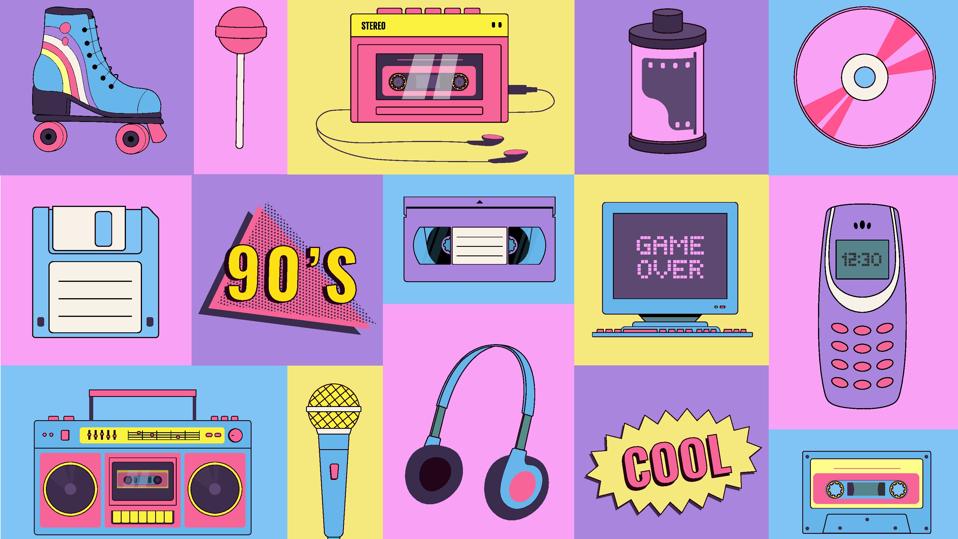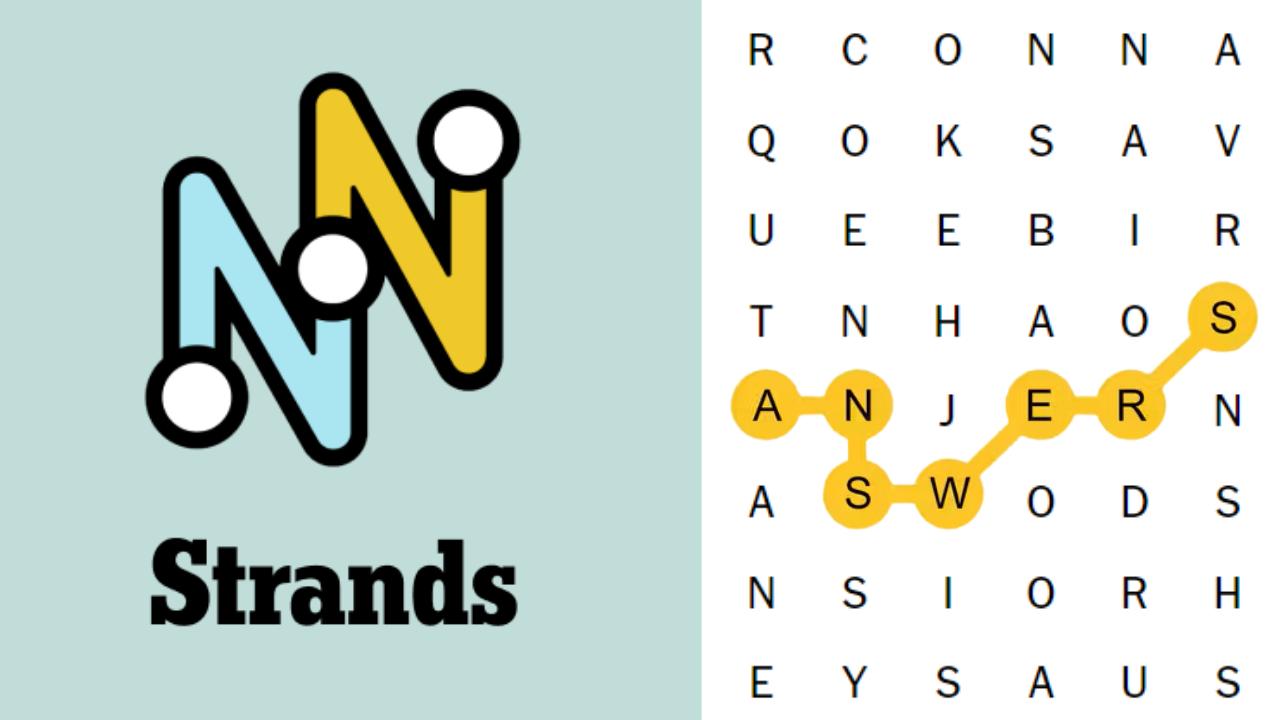Time doesn’t fly. It slips by when we stop noticing. The internet’s obsession with “nostalgia core” is a reminder to slow down and feel fully alive again.
getty
In recent years, a new kind of internet aesthetic has emerged, where nearly anything can be turned into a “-core,” from Cottagecore, Fairycore to Kidcore. These terms often rule the internet, helping assign themes and labels to shared socio-cultural experiences — however niche.
While these “cores” have now exploded across various social media platforms, many of them trace their roots back to Pinterest boards. This is where users began curating highly specific aesthetics a decade ago. The image-driven format allows subcultures to crystallize visually before they even have names. This may have been the very reason for the rise of the “core” suffix as a kind of shorthand for entire moods, styles or identities.
One such “core” that has been rapidly emerging is “Nostalgia Core.” This is less about style and more about memory and longing for a time that once was; perhaps one that was slower and simpler.
At its heart, nostalgia core taps into a collective desire to return to a world where summers felt endless and technology felt magical rather than something our entire lives depended on — essentially, a time where the pace of life allowed us to actually notice the little details.
The Resurgence Of Y2K
A major strand of this can be seen in the resurgence of Y2K aesthetics. With low-rise jeans, butterfly clips, flip phones, pixelated graphics, MySpace-style filters and early-2000s pop anthems resurfacing on TikTok, the early internet era is being reimagined and embraced as a time of optimism and playfulness.
Y2K style embodies the essence of nostalgia core, recapturing an iconic cultural moment in time. A 2023 study explores this trend in the field of fashion, highlighting how the Y2K aesthetic, born in the late 1990s, manages to perfectly capture the tension between past and future.
At the time, people were on the cusp of a new millennium. There was a mix of excitement about technology and the digital age. Designers fused metallic fabrics, cyber-inspired details and playful retro aesthetics into what became known as Y2K style.
Gen Z audiences, who are, in actuality, too young to have lived the original wave, are now embracing it as both nostalgic and fresh. This revival reflects a broader longing for a time when the future still felt wide open, which is also a major reason for the rise of nostalgia core.
Nostalgia Acts As A Coping Mechanism For Gen Z
A 2025 study has highlighted how the rapid rise of nostalgic aesthetics like Dreamcore and Y2K are deeply tied to the psychological and social experiences of Gen Z. The semi-structured study, built around four key dimensions, revealed why these aesthetics hold such powerful appeal:
1. Psychological motivation in the form of escaping pressure. Gen Z has come of age in an era marked by global crises and fast-paced technology, which is accompanied by relentless social comparison online. Nostalgia provides a temporary escape. Dreamcore’s surreal visuals and Y2K’s playful retro-futurism allow them to reconnect with the positivity and sense of safety associated with childhood. Consequently, nostalgia acts as a buffer against daily stress and uncertainty.
2. Sociocultural context comes from the experience of intergenerational anxiety. Nostalgia aesthetics operate as a mechanism to cope with what scholars describe as “intergenerational anxiety.” In comparison to previous generations, Gen Z faces heightened uncertainty about the future, be it climate change or economic instability. Nostalgia helps soften this anxiety by offering a retreat into imagined or remembered simpler times.
3. Globalization and accessibility. In earlier decades subcultures developed locally. However with globalization and digital platforms, nostalgic styles become universally accessible. A Y2K-inspired look or a dreamcore moodboard spreads instantly across TikTok, Pinterest and Instagram. This turns what was once niche into a global movement.
4. It serves the need for belonging and identity formation. Social media platforms have become the main stage for expressing nostalgic aesthetics. In doing so, they create communities. For Gen Z, engaging in dreamcore edits or Y2K-inspired fashion is not just self-expression. It is equally a way to signal belonging to a digital subculture that shares their longing for creativity and connection.
Researchers highlight how the popularity of nostalgia core reflects deeper shifts and needs. In many ways, for Gen Z, nostalgia functions as both a coping strategy and a community-building force. This goes to show how aesthetics can shape collective identity in the digital age.
Why The Past Feels Expansive
One of the most common experiences with nostalgia is the feeling that time used to move slower. But research shows this isn’t just our memory playing tricks. There are real perceptual reasons why time feels different in childhood compared to adulthood.
A landmark study by neuroscientist David Eagleman explored the ways in which our brain tends to distort time through what he calls “temporal illusions.”
His experiments found that when experiences are novel, surprising or even emotionally charged, the brain encodes more “memory markers.” This makes those moments feel longer in retrospect. This explains everyday illusions like the “stopped clock” effect or the feeling that time slows during emergencies.
When you first glance at a clock, the second hand sometimes seems to be frozen for longer than it should be.
In reality, your brain is filling in the gap caused by your rapid eye movements. Because your eyes momentarily cut off visual input, your brain stretches the first image to cover that blank space, creating the illusion of “extra” time.
Childhood, being full of first experiences, naturally feels expansive. This is primarily because the brain is constantly laying down new patterns of memory. By contrast, adulthood’s routines compress our sense of time, making years feel like they pass in a blur.
People can get stuck in these routines. Rarely encountering new or surprising events further accelerates the sensation of time flying. Nostalgia core acts an antidote to this “stuck” feeling by helping people revisit moments when time felt fuller and richer.
Use Nostalgia To Enrich The Present
Nostalgia core thrives on the bittersweet nature of memory, as it reminds us of moments that felt expansive, carefree and rich with first experiences. Yet, it also carries a tinge of longing for something that has passed.
Revisiting these memories can be deeply comforting. However, the value of nostalgia lies in moderation. Constantly dwelling in the past isn’t necessary or even helpful.
These playful trends serve as a gentle reminder that the same richness and expansiveness we associate with childhood or past eras can be created in the present in vivid and meaningful ways.
Many people get caught up in repetitive routines or the pressures of adult life, which can make days feel monotonous. In these moments, it’s easy to fall into a mental loop of longing for “the way things used to be” rather than fully experiencing the now.
A mindset shift from passively wishing for the past to actively shaping the present allows you to make your current experiences more vibrant. Nostalgia, in this way, becomes not only a sweet reminder of what you’ve lived, but also a guide for how to live in a richer way today.
Curious how nostalgic you really are? Take the science-backed Nostalgia Scale to explore the depth and nature of your personal memories.









